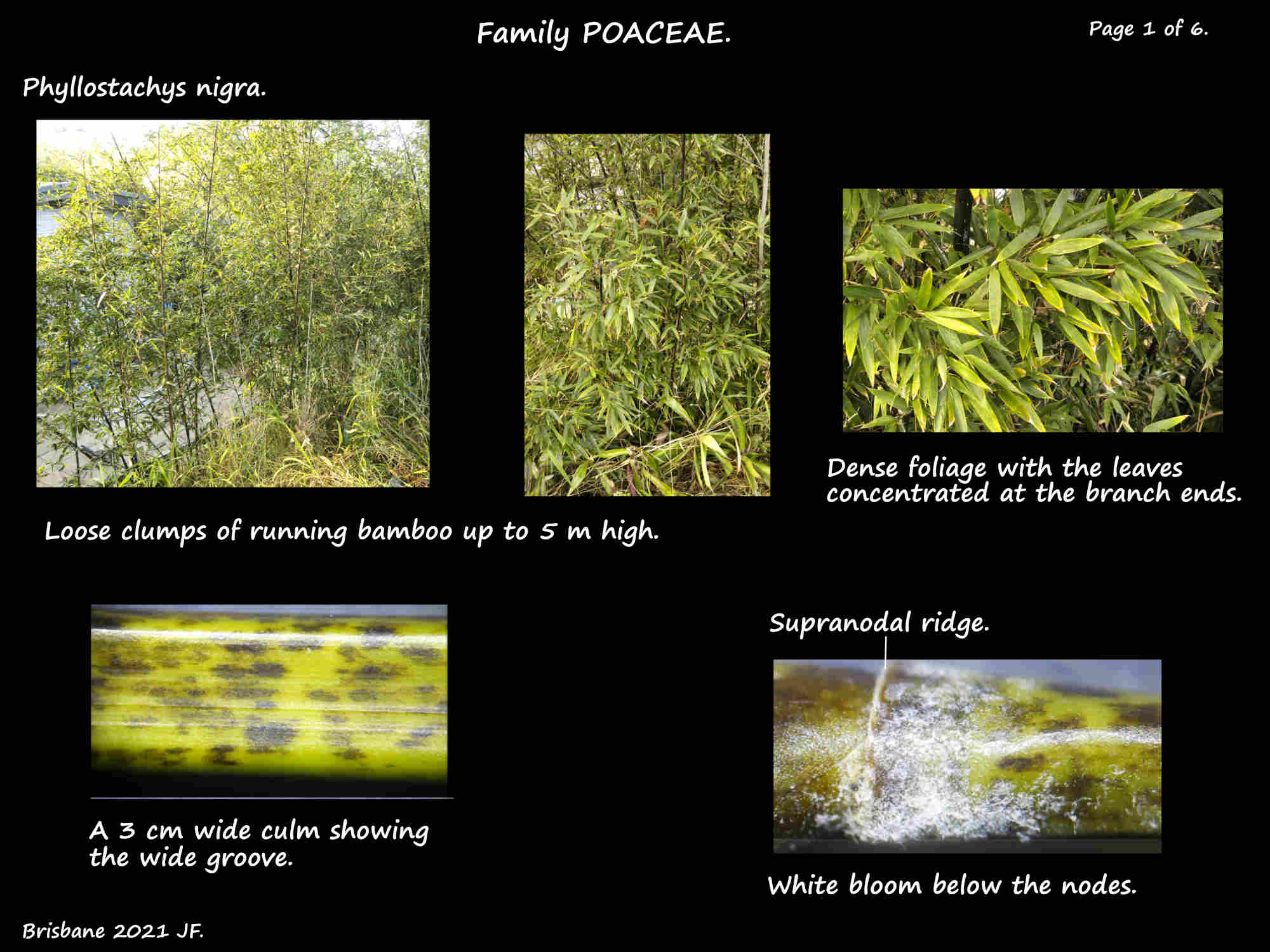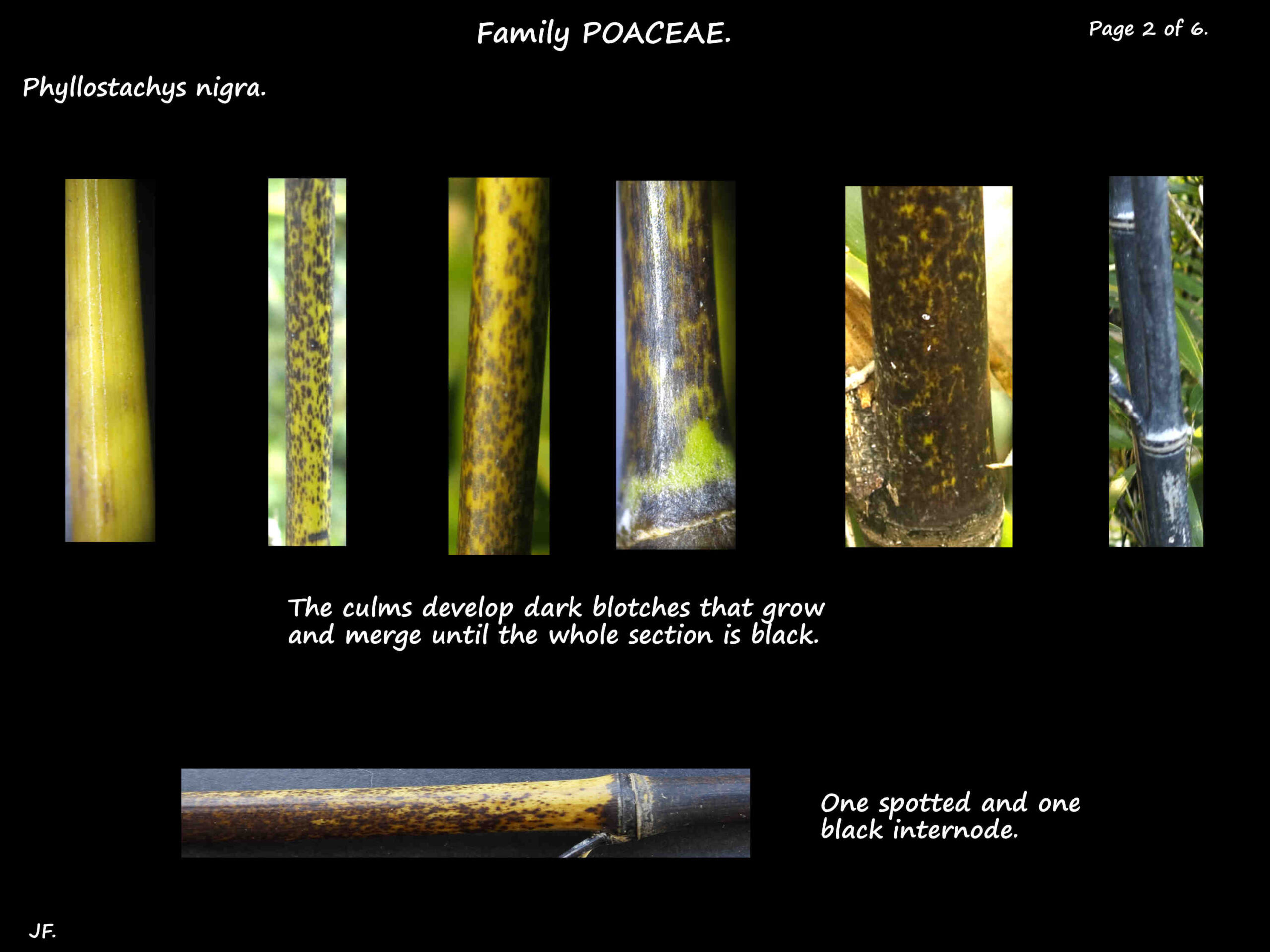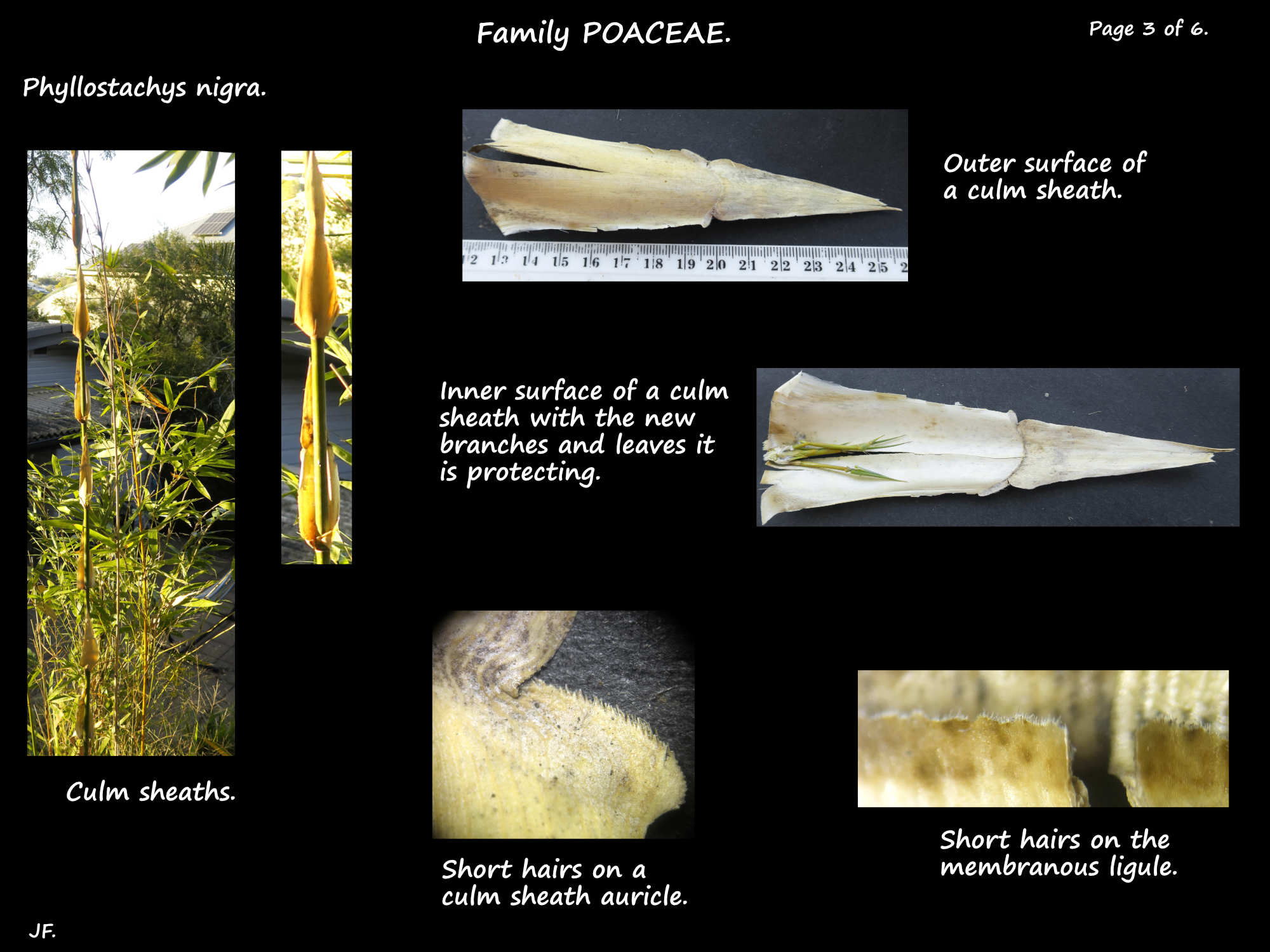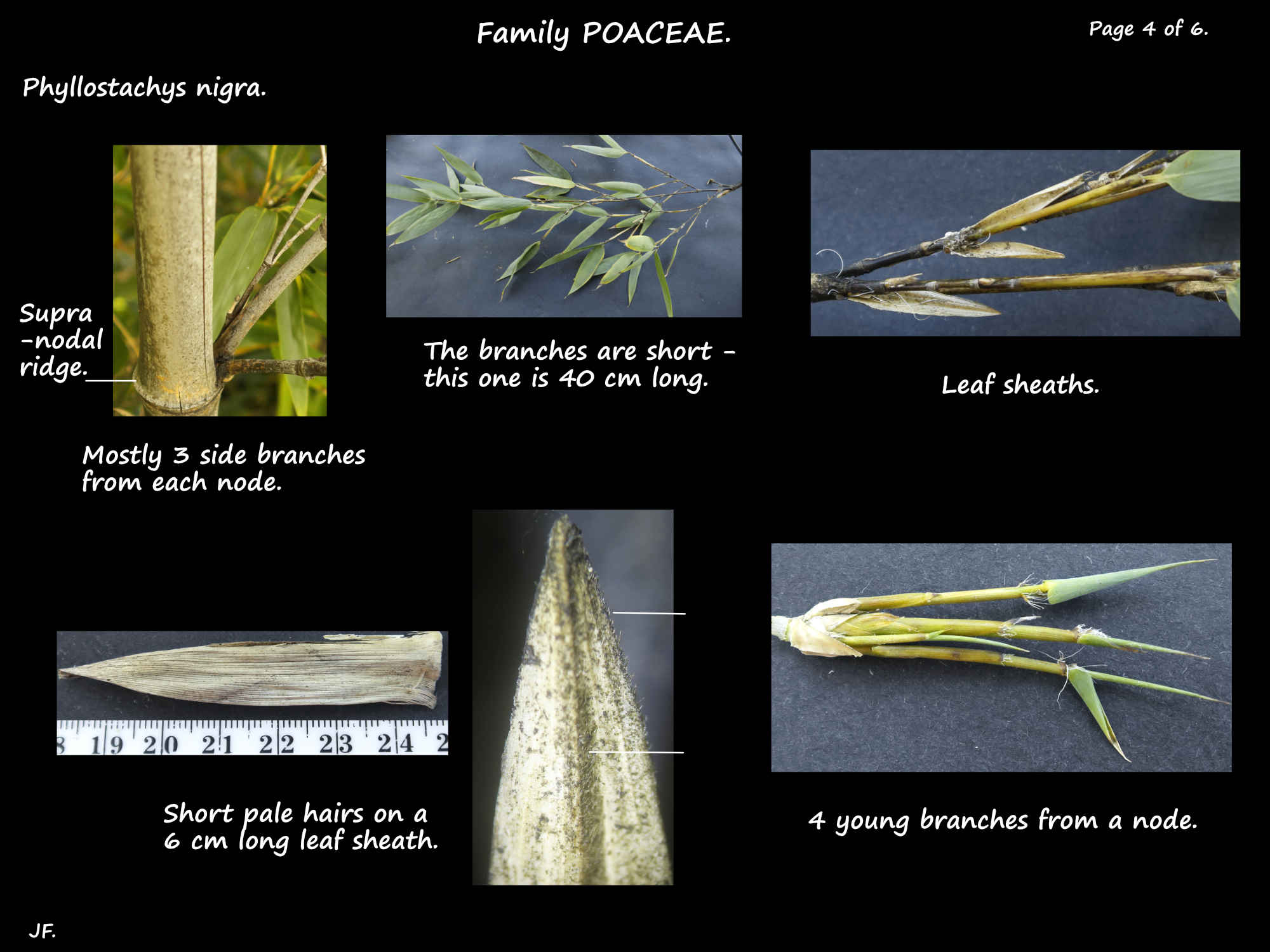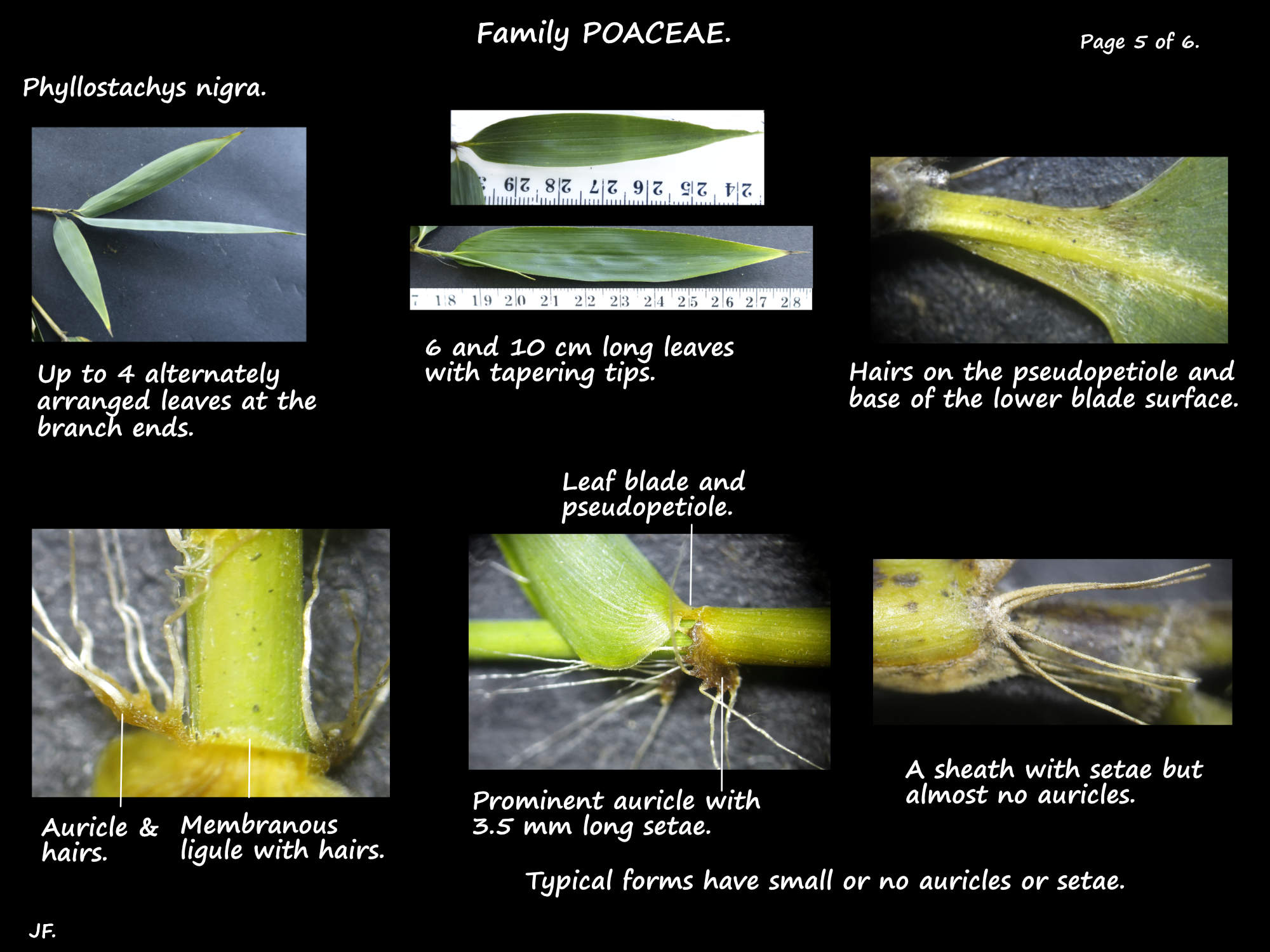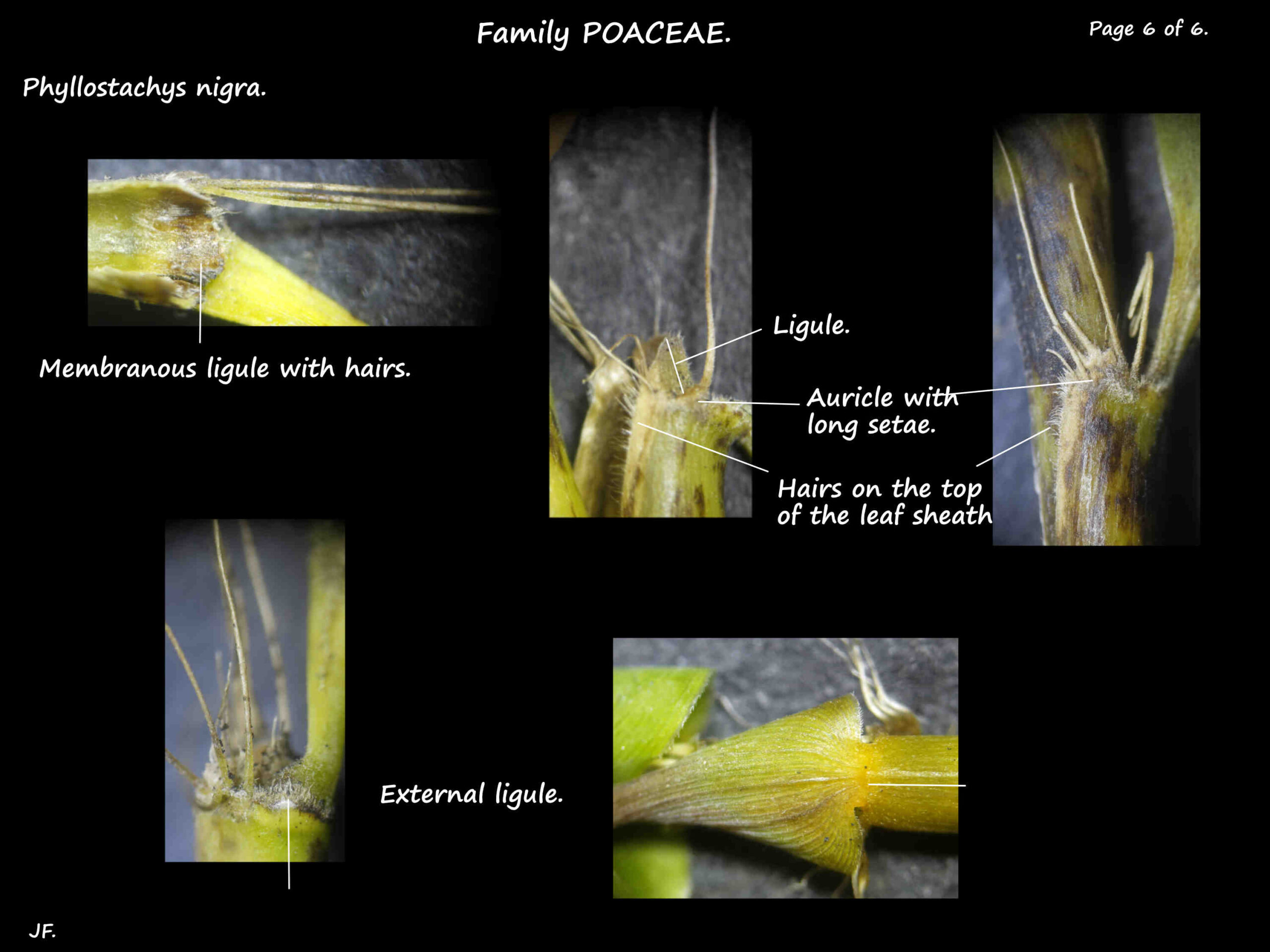Phyllostachys nigra.
Family Poaceae > Tribe Arundinarieae.
Black bamboo is one of the 50 or so species of Phyllostachys.
Also known as Bambusa nigra it is naturalised in Australia.
It is a declared weed in some areas including S. E. Queensland.
It is an erect, running bamboo with culms growing from long slender rhizomes.
The culms are up to 5 (8) m high and 3 cm thick.
There is a prominent ridge above the nodes and there may be brown hairs along the sheath scar.
Young culms have fine, sparse to dense hairs which disappear with age.
The initially green culms become yellowish.
Small, dark spots appear then, over 1 to 3 years, enlarge and merge to turn the culm black.
From above each side bud a wide groove extends all the way up each internode.
There is a band of white bloom below the nodes.
Culm sheaths are around 15 cm long and the edges only overlap at the narrow base.
The sheath has sparse erect hairs and a triangular blade.
The ligule is a membrane with short hairs and the small auricles have hairs on the margin.
There are typically 3 (2) to many short side branches growing from each node.
Each branch has 2 to 4 alternately arranged leaves that are clustered at the ends.
The leaf sheaths can persist until the leaves are mature but eventually fall off.
The upper edges may have short hairs.
At the junction of the sheath and blade is a membranous ligule with hairs.
In typical forms the auricles are small or lacking but they may be prominent with setae a few mms long.
There is an external ligule with short hairs.
The base of the lanceolate leaf blade narrows to a short pseudopetiole.
The blades are 6 to 12 cm long and up to 1.5 cm wide.
There may be hairs on the pseudopetiole and blade base.
Flowers are rarely if ever produced especially in cultivation.
Plants reproduce vegetatively via suckers from the elongated creeping underground stems (rhizomes).
There are a number of forms and cultivars.
J.F.
